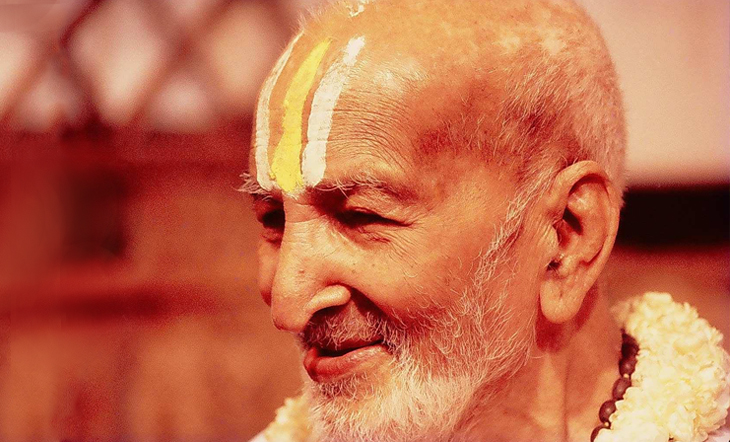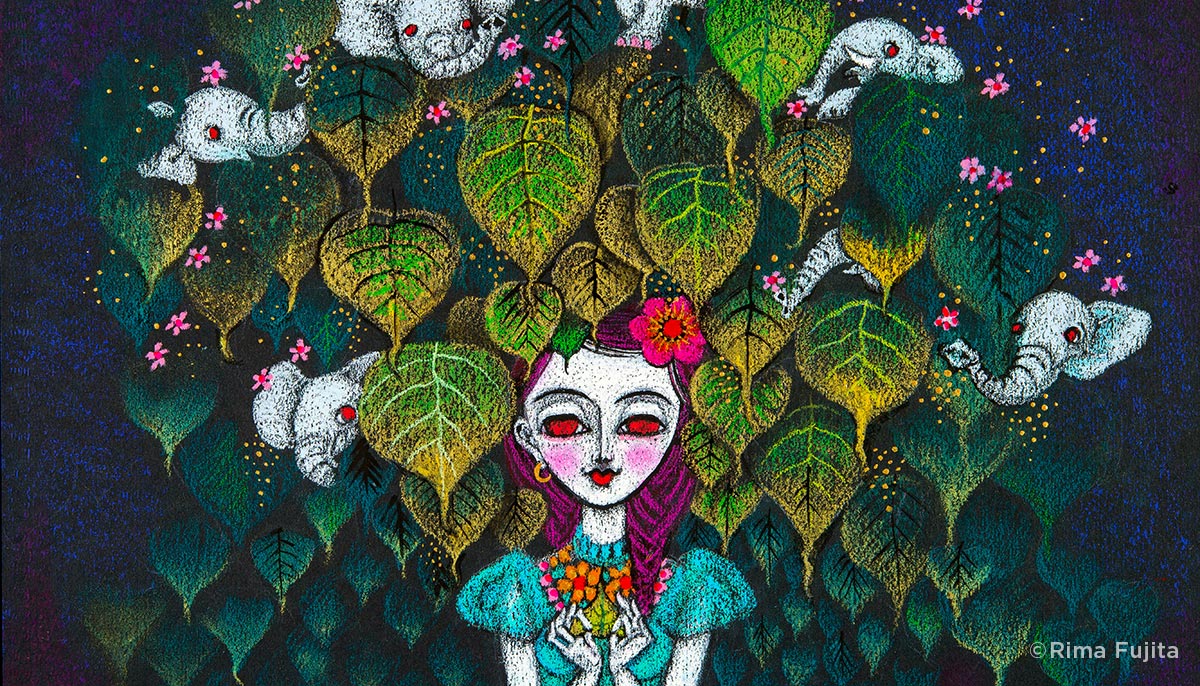The Sound of Enlightenment: Healing, Setting the Mind Free, Protecting the Mind, and Remaining Mindful of Dharma Throughout the Day
"Chanting mantras works directly on all types of karma ... we can heal various physical, emotional and spiritual conditions" Thomas Ashely-Farrand
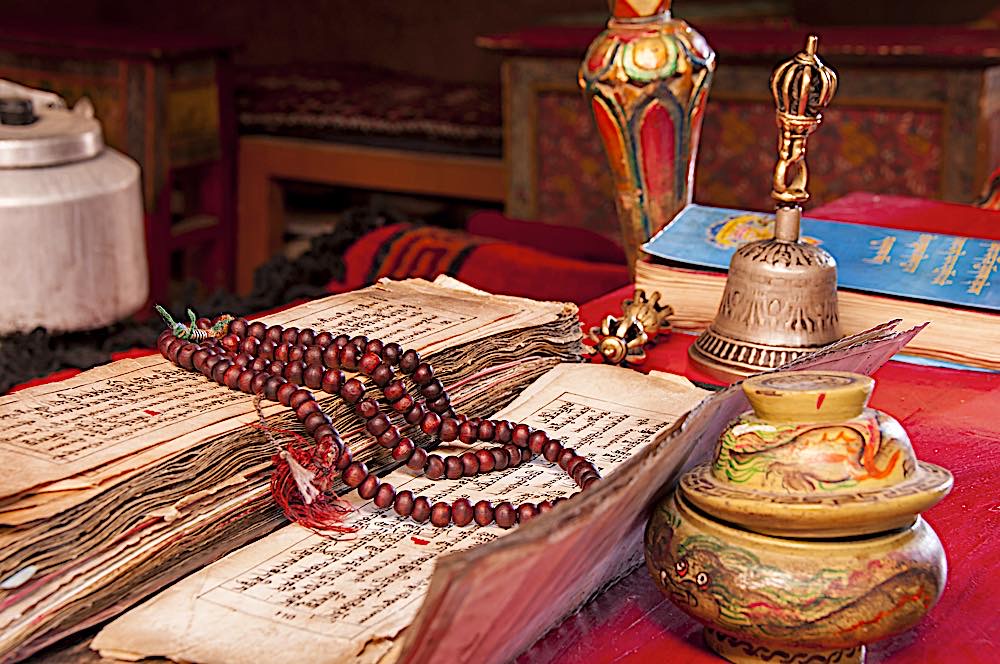
In some Buddhist cultures, children learn to chant mantras before they learn more common speech. Mantra, sacred sounds, are often considered protective and healing, or even life-changing. They are commonly used by Buddhists and Hindus, and — arguably — other religions who make use of “chanting.”
It seems almost silly to accept the notion that “sound” can change a person’s life situation. Yet research, and centuries of anecdotal evidence point to definite benefits from mantras.
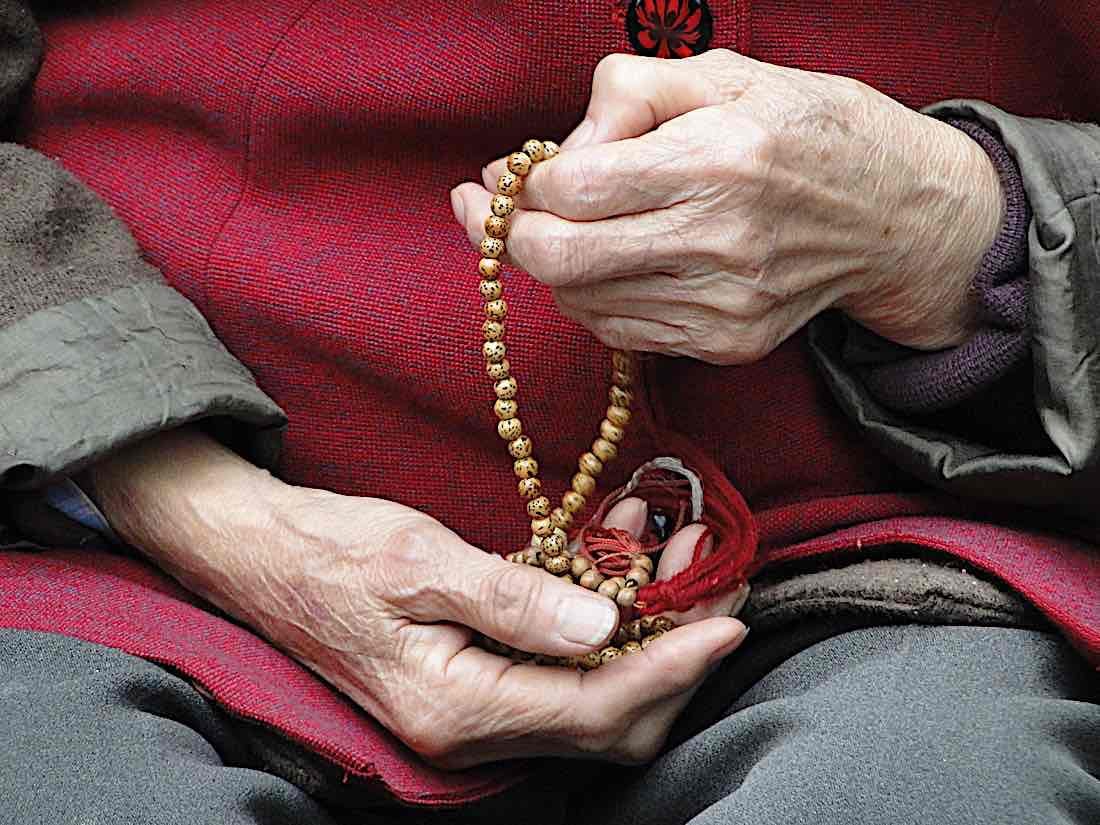 Repeated mantra recitation is a form of concentration and mindfulness.
Repeated mantra recitation is a form of concentration and mindfulness.
[Full story on the Mantra crop here>>]
Health changes, are understandable— at least at the level of reduction of stress through mantra meditation. Obviously, with faith, there is a reasonable level of “faith healing.” And yes, plants can be shown to grow more vigorously with certain sound vibrations. Yet, in Vajrayana and Mahayana Buddhism, it is said that mantra is effective, even if the person chanting it does not have faith. How can a reasonable person actually believe that Mantra can trigger healing, or protect us, or bring us good fortune with or without faith?
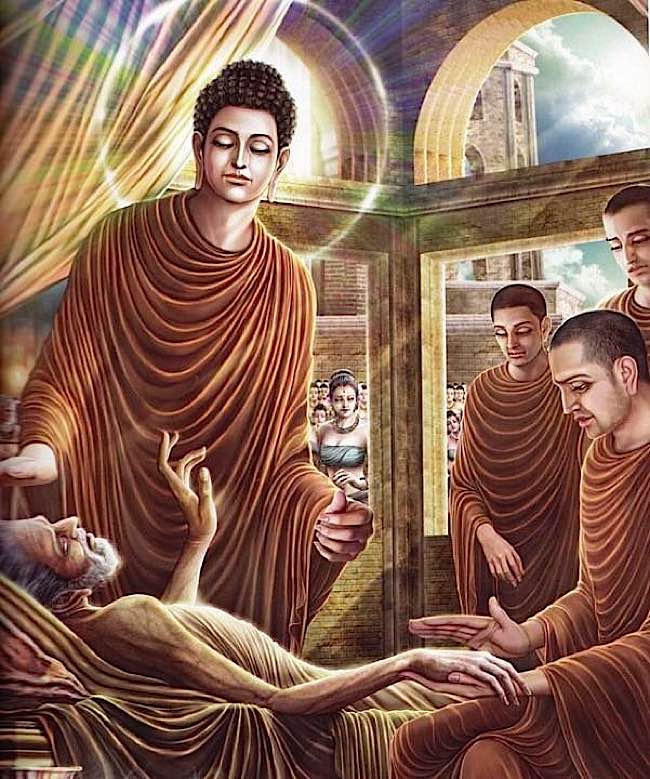 Buddha, the Doctor
Buddha, the Doctor
Buddha taught that He (the Buddha) is the doctor, the Dharma is the medicine, and the Sangha is the nurse. On this level, Dharma, the spoken words of Buddha, is medicine. Mantras are Dharma distilled to a handful of words (at least, that’s one way to look at them.) Just as, with our eyes, we might gaze upon a beautiful statue of a contemplative Buddha, and feel suddenly empowered, the speech of the Buddha (mantra) has the same effect, using sound and vibration.
On more practical level — and perhaps easier to accept for the non-Buddhist — the whole concept of remaining focused on these words (and what they symbolize), brings us closer to “right conduct” in our lives, probably improving our “karmic” situation (helping us neutralize negative karma.) Removing the negatives from our lives, tend to bring the positives into our situation.
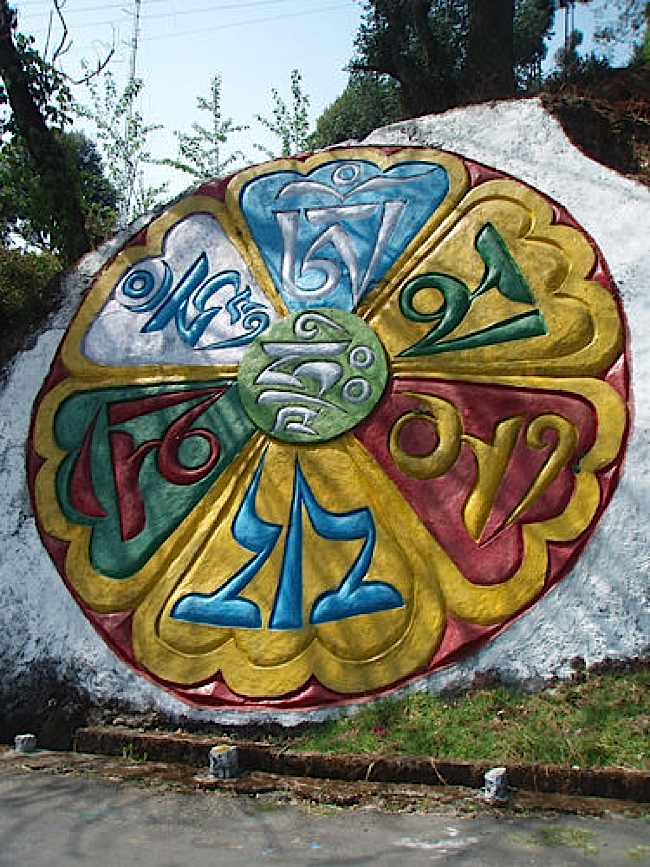 Meditating on mantra, the written script (rather than the sound) is also a powerful practice. Tibet and some areas of India or Nepal you might come across Mani Mantra walls or Mani rocks like this one. These numerous tributes to Chenrezig remind us to keep compassion in our heart as we go about our daily tasks. The Mani wheel shown here has the “Hrih” seed syllable in the centre and the full Om Mani Padme Hum mantra in Tibetan letters. (In Tibetan, sounds like: Om Mani Peme Hung”)
Meditating on mantra, the written script (rather than the sound) is also a powerful practice. Tibet and some areas of India or Nepal you might come across Mani Mantra walls or Mani rocks like this one. These numerous tributes to Chenrezig remind us to keep compassion in our heart as we go about our daily tasks. The Mani wheel shown here has the “Hrih” seed syllable in the centre and the full Om Mani Padme Hum mantra in Tibetan letters. (In Tibetan, sounds like: Om Mani Peme Hung”)
Healing Power of Sound
“It’s also been found that self created sounds such as chanting will cause the left and right hemispheres of the brain to synchronize. Such chanting will also help oxygenate the brain, reduce our heart rate, blood pressure and assist in creating calm brainwave activity. In addition, listening to certain chants has great beneficial effects.” — Johnathon Goldman Tantra Of Sound(Hampton Road)[1]
Healing Mantra of Medicine Buddha chanted in Sanskrit:
Goldman explains: “On one level, one can see that mantric chanting, as observed years ago by Dr. Herbert Benson, helps induce the “relaxation” response, causing reduction of heart beat, brain waves and respiration. On another level, as Dr. David Shananoff-Khalsa believes, mantric recitation enables the tongue to stimulate the acupuncture meridians inside the mouth (particularly on the roof), thus enhancing help. Dr. Ranjie Singe found that the chanting of specific mantras caused the release of the hormone melatonin and is investigating the importance of this in the healing process. He has found that there are many benefits including shrinkage of tumors and enhanced sleep because of this. He writes about this in his book Powerful Self Healing Techniques.”
He explained: “Everything is in a state of vibration and when we are in a natural, resonant vibration, we are in a state of health. But if some part of the body begins to vibrate at a counter frequency, the energy becomes stuck and disease sets in. Therefore, by mantric chanting, one can cause stuck energy to become released, and we can return to our natural state of resonance, effecting a cure.
“I have, incidentally, observed this phenomenon many times during workshops. We will be reciting a mantra to invoke a specific entity—perhaps Tara, Tibetan Goddess of Compassion for example, in order to better embody the energy of compassion. However, during and after the process, I’ve seen people with chronic health problems emerge from the chanting quite healthy. It’s amazing.”
Sound Symbols
Tara’s Activity Mantra brings all the activities of all the Buddhas: protective, pacifying, powerful, and wrathful into our lives:
Mantras are often considered to be “sound” icons or symbols. In the same way we visualize a Buddha with our imaginations, or visual symbols, likewise we intone mantras as audible triggers or symbols. Both visualization and mantras, from one point of view, help us connect to the Buddha within.
Mantras are much more than just symbols. The Sanskrit root of “mantra” is “manas” which means mind combined with “trai” which means to “set free from.” The literal definition of mantra is “set free the mind.” Some interpret “trai” as protect, which made mantras somewhat synonymous with mind protection (whether yours or divine).
Longer Dharanis from Sutra are also a form of more elaborate mantra. The best of example of a Dharani, chanted by many daily, is Amitabha’s Pure Land Dharani (sometimes called the Long Life Dharani, which connects us with the mind of Compassion, and is well known for bringing joy, bliss, and peace. It is also an aspiration to purify all negative karma and help us be reborn to Amitabha’s Pureland. By purifying obstacles and negative karma, it is also known as the Dharni of Long Life
Anywhere, Anytime Mantras Help Us
Buddhists often find themselves chanting mantras all day long, when driving, working, playing. In effect, this extends mindfulness of Buddhist practice throughout our day, rather than just occasionally when we find time to formally meditate.
Venerable Zasep Tulku Rinpoche explained why it’s important to think in these terms (during an interview with Buddha Weekly): “One very famous Lama, named Sakya Pandita, wrote “Even if you are going to die tomorrow, you should start the Dharma today.” Why? Because your mind continues. Your mind doesn’t die. The body dies, the mind continues. So whatever you study in this lifetime remains with you in your mind as an imprint. Don’t think, “I’m an old man now, waiting to die, there’s no point.”
Rinpoche pointed out that mantra practice is perfect for busy, modern people, and used his own busy schedule — he teaches non stop in countries around the world: “I do my mantras when I’m on a plane. I do my mantras when I’m on the subway. I travel a lot. I sit on the plane, have a cup of tea, then do my mantras. I do my practice first, then maybe try to get some sleep.” [2]
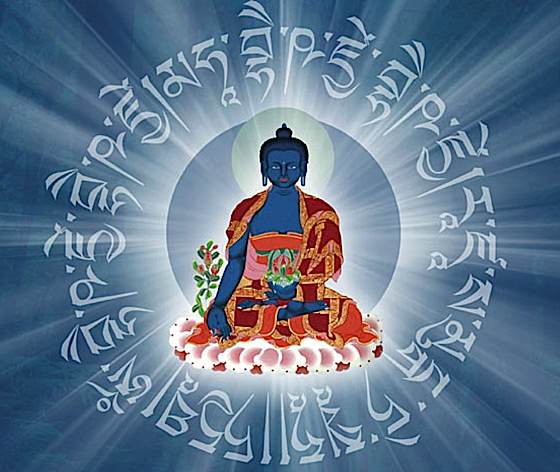 Visualizing the Medicine Buddha (centre) as “the Doctor” and the Mantra (Dharma as medicine) as rays of healing Lapis Lazuli light absorbed into the patient (or self) assists in healing.
Visualizing the Medicine Buddha (centre) as “the Doctor” and the Mantra (Dharma as medicine) as rays of healing Lapis Lazuli light absorbed into the patient (or self) assists in healing.
Mantra and the “Mechanics” of Sound
In a fascinating feature on the syllable Aum (Om), Gabriel Axel in U.S.News, explained how sound can affect the brain: “A, U and M are sonorants or rings, so this particular mantra qualifies an object that inherently has no interactions (hits or slides). In terms of physics, this means our object is formless. Try resonating the mantra aloud, allowing air to flow through the nasal passage, smoothly transitioning between the three sounds.
Vajra Guru Mantra chanted in Sanskrit. Sanskrit the “mother language” has nuances of vibration and pronunciation that empower mantras. The syllables of Sanskrit, also carry multiple meanings. For example, the mantra of Guru Rinpoche can be translated twelve different ways (all powerful blessings), as described in his own teaching on the mantra (see this feature>>) It is also a very beautiful mantra that resonates with the meditative mind:
If you do not wish to disturb anyone that may be around you, you can whisper the sounds subvocally. The A (pronounced ä, as in “car”) can feel like a wide opening and has a broader vibratory effect on the physical body, approximating the gross consciousness of the waking state. The U (pronounced o͞o, as in “soup”), has a funneling effect, narrowing the consciousness into subtler sensations such as thoughts and impressions, approximating the dream state. The more nasal M sound is like the drone of a bee; it makes the cranium vibrate in a kind of undifferentiated and ubiquitous earthquake over the convolutions or valleys in the cerebral cortex, approximating the deep dreamless sleep state of consciousness. Traditionally, Aum represents and has the capacity to progressively open up the practitioner to the ever-present formless and timeless reality, the background radiation of the cosmos that echoes the Big Bang.” [3]
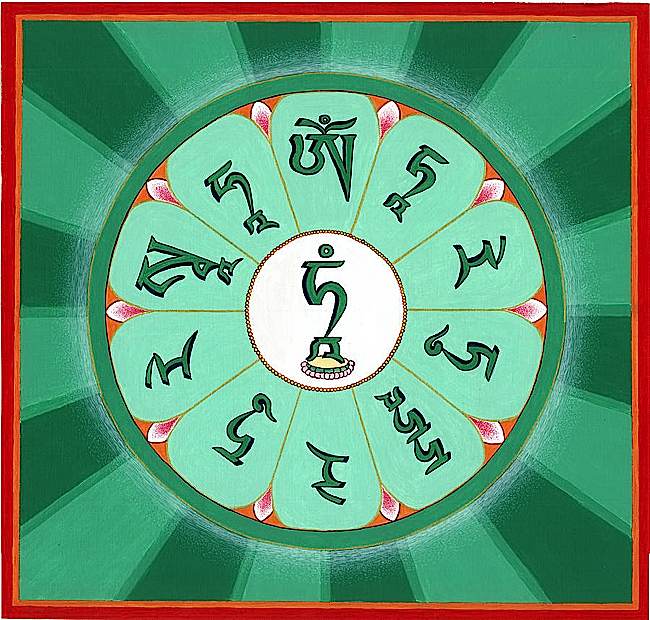 Most mantras begin with AUM (Om), seen here in Tibetan script on the top of the mantra wheel. Shown is Green Tara’s mantra is known for “active” protection, which reads: Om Tare Tuttare Ture Svaha (with the syllable TAM at the centre to represent Tara).
Most mantras begin with AUM (Om), seen here in Tibetan script on the top of the mantra wheel. Shown is Green Tara’s mantra is known for “active” protection, which reads: Om Tare Tuttare Ture Svaha (with the syllable TAM at the centre to represent Tara).
Mantra also means “instrument of thought”
The best dictionary definition for mantra is “instrument of thought”, a concept that nicely connects with one of the main purposes of the sounds. In both Buddhism and Hinduism, one of the many purposes of mantra is to aid in concentration, mindfulness and meditation. The repetition of a mantra — especially if intoned with rhythm in Sanskrit — is somewhat hypnotic, almost trance-inducing for some people. On one hand, mantra focuses and helps us stay mindful and in the present. On the other, it shifts us into an “altered consciousness” where concepts, visualization and meditation becomes very effective for some people.
Another way of considering this definition is as an “enabler.” Thought enables action. Mantras enable (at one level) thought. At another level mantras could be said to “alter” thought, especially where the practitioner has a “negative” habit. For example, if we lack compassion, we might chant the mantra of the Lord of Compassion, Avalokiteshvara: Om Mani Padme Hum.
Typically, for a serious student, the mantra that automatically comes to mind and lips is that of the Buddha-form you find most appealing — or most needed in your life. For people needed active protection, this might be Green Tara’s rapid-acting mantra: Om Tare Tuttare Ture Svaha. For a student struggling with exams, they might be drawn to Manjushri’s wisdom mantra: Om Ah Ra Pa Ca Nah Dih (Ca is pronounced Tza). For healing, Medicine Buddha comes to mind and lips: Om Bekhandze Bekhandze Maha Bekhandze Bekhandze Randza Sumudgate Svaha.
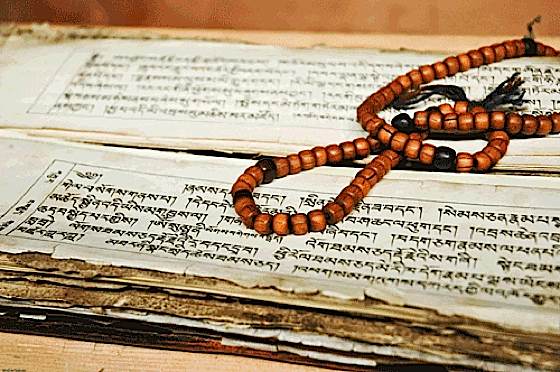 Mala’s and sacred written mantras assist Buddhists in counting mantra repetitions, valuable to practice and mindfulness focus.
Mala’s and sacred written mantras assist Buddhists in counting mantra repetitions, valuable to practice and mindfulness focus.
Nembutsu—or mindfulness of Buddha
One of the main purposes of mantra is mindfulness. Nembutsu literally means “to think of Buddha” which is based on the ancient teaching “Be mindful of the Buddha and the Buddha is mindful of you.” This is a practice of Pure Land Buddhism, but it does apply effectively to much of mantra practice, getting to the heart of mantra’s power — mindfulness.
The Nembutsu of Guanyin Bodhisattva:
Law of Karma: Why Mantras Can Help us Heal
Buddhists and Hindus, who both use mantras effectively, believe that a key purpose of mantra is to “set free from” karma. Since in Buddhist belief, our current conditions (and health) are caused, in part, by negative karma from earlier actions (either in this life, or in a previous life), Mantra practice becomes an important aid in healing, and stress reduction. Mantra is said to help work off negative karma through mindful practice and sacred sounds that connect with the “divine.”
“Chanting mantras works directly on all types of karma, helping to overcome what may have been created inadvertently or ignorantly in this life or some past life,” wrote Thomas Ashely-Farrand in Healing Mantras: Using Sound Affirmations for Personal Power, Creativity and Healing. “As part of this process, we can heal various physical, emotional and spiritual conditions…”
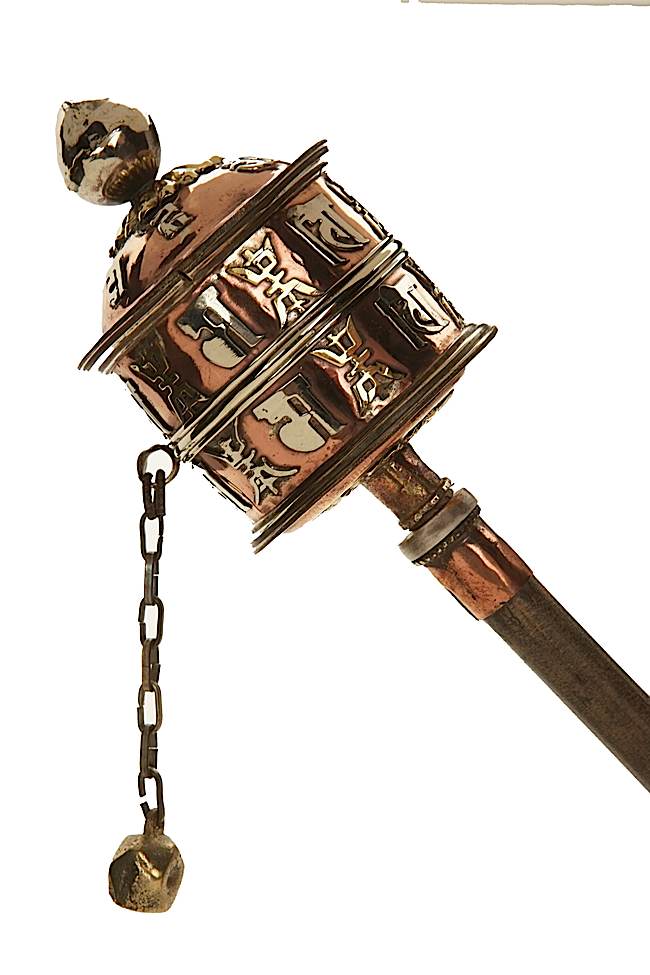 Prayer wheels are also a noted stress-reliever. They contain tens of thousands of copies of the compassionate mantra of Avalokitesvara, Om Mani Padme Hum. All over Asia, people spin the wheels clockwise daily to bring compassion and blessings into their lives—and more importantly, to send the blessings out to millions of sentient beings.
Prayer wheels are also a noted stress-reliever. They contain tens of thousands of copies of the compassionate mantra of Avalokitesvara, Om Mani Padme Hum. All over Asia, people spin the wheels clockwise daily to bring compassion and blessings into their lives—and more importantly, to send the blessings out to millions of sentient beings.
Sacred formula, Sacred Speech
A search on the word “mantra” on the internet reveals all sorts of definitions. The most exotic of these is “sacred formulas” and indeed they can be thought of as sacred speech. Sanskrit, the Mother of all tongues and a root to many languages, contains within its syllables sacred seeds, according to ancient traditions that stretch back thousands of years. Other definitions include “prayer or song of praise”, and though technically true, most practitioners believe mantra transcends simple praise.
Mantras don’t always translate into literal meanings. Syllables such as the most sacred OM, AH or HUM do not specifically mean anything and are considered sacred sounds with immense significance.
Mantras as magic? Not so Much
Less uplifting definitions on an internet search include: mystical verses, magical formula, charm, spell, incantation. These definitions do not fit the noble mantra, although there is some essential underlying truth, since mantra is often attributed with internal change, external change, wonders, marvels, even miracles. Yet, many believers describe mantra as a vehicle of transformation—not as a “spell” or formula of words. The mantra, according to many, connects us with the divine or with the Buddha within (outward or inward) and works on the transformation of our minds.
It would be more useful to define mantra as a vehicle for illumination, clarity and removing defilements, which can have “magical effects” than to state the mantra is actually magic. Still, there are thousands upon thousands of stories of miraculous rescues for Tibetans who invoked Tara with here most popular ten syllable mantra:
OM Tare Tuttare Ture Svaha
Video teaching: What is Buddhist Mantra and How Can it Help Me? — a short teaching from H.E. Zasep Rinpoche:
Mantras in healing
Mantras are extremely effective for practitioners in healing. Millions of people rely on mantra to support their healthy practice. Whether because of transformation of the “mind”—the almost limitless power of the internal—or the intervention of a divine external, there is no end to the healing miracles attributed to mantra. Medicine Buddha and White Tara Mantras, in particular, if intoned with sincerity and faith—although some teachers teach that mantra is effective even in absence of belief—have been attributed with many thousands of cures, remissions of cancer, extending of lives.
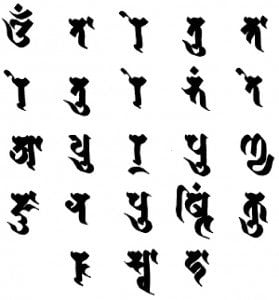 White Tara’s mantra in sanskrit script.
White Tara’s mantra in sanskrit script.
For example, to increase longevity, merit, remove defilements and help heal, the White Tara mantra is used effectively by millions of practitioners:
OM Tare Tuttare Ture Mama Ayur Punye Jnana Pushtim Kuru Ye Svaha
Mantra of White Tara:
As a focus for the mind, to create the conditions for mindfulness or healing or simple meditation, the mantra should be repeated over and over, usually in a low, steady tone with the beginning of the mantra commencing right after the ending of the previous recitation. Mantra is nearly always combined with meditation and visualization to increase it’s impact on mind and health. In some lineages, empowerment and a teacher’s guidance is a must, although some mantras—such as White Tara and Medicine Buddha—do not require empowerment. Increased repetitions is credited with increased effect by many teachers. Usually, a minimum of twenty-one recitations is considered useful, but normally a minimum of 108 mantras will be voiced in a meditation session, corresponding to:
108 beads in a mala, which are turned with each recitation bead-by-bead 108 delusions (which is the basis for the 108 beads, among other 108s).These are bare minimums. Many practitioners will meditate on thousands of mantras each day.
Please also see these features on Mantras:
Part 2 of our series on mantra: “Good Vibrations”>>NOTES
[3] “Your Brain on Om” U.S. News Gabrial Axel.

 Hollif
Hollif 








